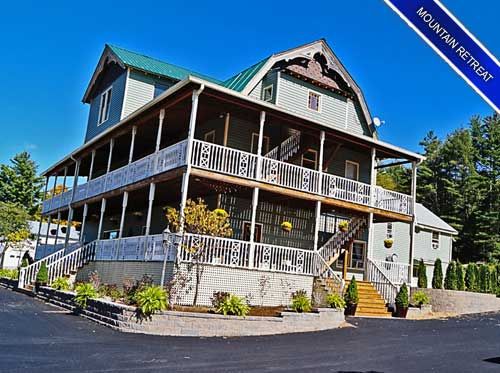Adolescent Treatment
Adolescent Treatment
Adolescents are at an important stage in life where they are beginning to understand more about the world and their place in it. Adolescent treatment for substance abuse pays special attention to that fact.
The Need for Specialized Adolescent Treatment
The need for specialized treatment for adolescents is clear when one considers the malleability – both socially and physically – of adolescents. They are at a stage where they are getting to know themselves and carving their place in the world, and their brains are at a stage of crucial development. Interpersonal relationships are changed, and new cognitive abilities develop in adolescence. Significant substance abuse can interfere with and shape these developments in a negative way, and treatment must address these changes and steer them in a positive direction.
Adolescents who engage in substance use and abuse are at a higher risk for a number of negative consequences. According to the US National Library of Medicine, documented risks include motor vehicle accidents, suicides, homicides, violence, delinquency, psychiatric disorders, and risky sexual practices. Early intervention and treatment can help to prevent these consequences from befalling our youth.
Types of Adolescent Rehab Centers

Adolescents who get caught up in substance abuse miss out on important experiences in favor for less healthy ones.
Given the fact that the exact situation of each adolescent in need of treatment will be different, there needs to be different types of treatment available. Treatment varies in length, and in depth or intensity. Some common factors, such as counseling and group therapy, are generally found across the different types of adolescent treatment, but other aspects are different. These are the main types:
Outpatient/Intensive Outpatient Treatment:
- Outpatient treatment is the most common type of adolescent treatment.
- The best candidates for this type of treatment are those with less severe addictions, few if any mental health issues, and a good support system at home.
- Outpatient treatment requires patients to go to the rehab center for appointed treatment sessions at appointed times. This may be once a week, several times a week, or every day, and can range from about one hour to several hours.
- Outpatient adolescent treatment usually involves individual therapy, and sometimes incorporates group therapy and family therapy. Drug tests are an important component to monitor and ensure abstinence from drugs.
- Low-moderate intensity is considered to be programs that are delivered 1-2 times per week.
- Intensive outpatient treatment is more than twice a week, and sessions are typically longer than three hours.
Partial Hospitalization:
- Partial hospitalization is a treatment intensity in between outpatient and inpatient.
- Adolescents with severe substance abuse but who can still safely live at home are likely to be referred to this type of program, sometimes called ‘day treatment’.
- Treatment is at least 5 days a week and takes place for 4 to 6 hours each day.
Residential/Inpatient Adolescent Treatment
- Inpatient rehab requires adolescents to reside in the treatment facility where they have access to 24-hour care and support.
- Adolescents with intense addiction issues and mental health and medical needs are best suited to this type of treatment. The structured environment and lack of temptation from the outside provides a great help.
- Therapeutic communities are one example of this. They are particularly long-term programs where adolescents take on responsibilities and household chores, learning social and personal responsibility. They usually go to school, as well as counseling and therapy.
- Residential treatment is also recommended for individuals with a home environment that is not conducive to sobriety and recovery.
What is the Appropriate Treatment Type for my Adolescent?
Adolescent treatment takes place in a few different settings, and with a few different methods. The exact type of treatment that one person will go through depends on a few different factors. It is highly recommended that you discuss this question with a treatment professional, and that this professional gets as much information about your child as possible.
The American Society of Addiction Medicine outlined these as areas to be assessed in order to determine the appropriate length and intensity of treatment:
- Level of intoxication and potential for withdrawal
- Presence of other medical conditions
- Presence of other emotional, behavioral, or cognitive conditions
- Readiness or motivation to change
- Risk of relapse or continued drug use
- Recovery environment (family, peers, school, legal system)
An adolescent addiction and substance abuse specialist will use these factors to determine the best plan of action for your adolescent’s recovery.
Types of Treatment Used in Adolescent Rehab
Treatment methods in adolescent rehab addresses specific needs and consequences for the individual, their family, and society. These approaches and types of treatment are often mixed and matched depending on the individual and the treatment center, and you can typically find the different types at both inpatient and outpatient centers.
Behavioral Therapy/Behavior Management and Modification
According to the North Carolina Adolescent Substance Abuse Treatment Project, the main tenant of behavioral therapy is that behavior is learned, and can thus be unlearned. Behavioral therapy helps people to recognize negative behaviors and attitudes that lead to substance abuse, and to change those behaviors.
To modify behavior, reinforcement and praise are given for positive behaviors. Negative behaviors are either ignored or punished.
Contingency Management
Contingency management has shown particular promise for treating substance abuse in adolescents. In this type of therapy, individuals receive rewards for target behavior, such as drug-free drug tests. Rewards include coupons, vouchers, movie tickets, and other positive, constructive things.
Cognitive Behavioral Therapy (CBT)
CBT emphasizes the connections between thoughts, feelings, and behavior. Therapists using this technique help patients to identify and examine thought patterns and behaviors that lead to substance use to see the connections there. Once understood, therapists help patients identify the patterns as they are happening so they can turn those behaviors and thoughts into something more productive, and to lead them away from substance use. They may use role playing, behavioral modeling, and other practice exercises to do this.
Motivational Interviewing/Motivational Enhancement Therapy
Motivational interviewing (MI) is sometimes used as a standalone therapeutic approach, while at other times it is incorporated into other therapies. It is intended to enhance the patient’s motivation for change. The way it works is that the therapist first demonstrates that they understand where their client is coming from, then they develop the discrepancy between where they are and where they want to be. They then help the client develop autonomy and confidence in their ability to change.
Motivational enhancement therapy is based on this method. It essentially consists of about three sessions with a therapist in which the therapist discusses substance abuse and treatment with the patient in an effort to elicit self-motivational statements from the adolescent to establish their motivation.
Group Therapy
Group therapy for adolescents usually uses cognitive behavioral therapy methods in a group setting. It can be helpful for adolescents to learn productive behaviors from others, and to make connections with people who share similar stories.
The National Institute on Drug Abuse warns, however, that group therapy can be risky for adolescents. Sometimes group members steer the conversation toward talk that glorifies drug use and other subjects that undermine recovery efforts. It is important that counselors are aware of this and maintain a positive direction for the conversation.
Family-Based Approaches
Engaging the family in an adolescent’s substance abuse treatment can be very important. This type of therapy often addresses other familial problems in addition to the adolescent’s substance abuse, including family communication and conflict, other disorders, peer networks, and problems in school or work. Family based adolescent treatment has shown to be very effective.
Addiction Medications
At this point in time no addiction medications are FDA-approved for adolescent treatment. While medications do exist for treating addictions to opiates, nicotine, and some aspects of alcohol addiction, there has not been too much research into their use for adolescents. However, some doctors do prescribe them, especially if the adolescent is somewhat older.
Principles of Effective Adolescent Treatment
According to the National Institute on Drug Abuse (NIDA), most adults who develop a substance use disorder report having started their use of drugs and alcohol in adolescence or early adulthood. With that in mind, it is important to identify and treat substance use as early as possible.
NIDA outlines the following principles of effective treatment:
- Adolescents can benefit from treatment even if they are not addicted to a drug.
- Do not underestimate the significance of what may seem to be isolated drug taking.
- Routine medical visits can be a site for intervention, can encourage healthy behaviors and discourage substance abuse.
- Treatment should begin with an assessment of the individual to find out their strengths and weaknesses, their stage of development, relations, school performance and more
- Treatment must address the adolescent’s needs as a whole person, rather than just look at their drug use. This may be housing, mental health, school, and more.
- Behavioral therapies can greatly help adolescents succeed in avoiding substances.
- Effective treatment incorporates the family.
- Any mental health conditions adolescents have must be adequately identified and treated.
- Violence, child abuse, and risk of suicide should be identified and addressed.
- Drug use needs to be monitored throughout treatment.
- An adequate treatment length must be met. Some studies suggest this to be a minimum of three months, though this depends on the adolescent’s particular situation.
- Continuity of care after treatment is important. Monitoring drug use, follow up visits, and keeping in touch with the family are options for this.
- Testing for STDs and other illnesses is important while in treatment to find out the extent to which substances have affected the person
When finding treatment for your child it is important to keep in mind these principles, and to find a treatment center that follows through with them.
Teen Substance Abuse Statistics and the Need for Treatment
The need for substance abuse treatment for adolescents seems to be growing each year. Teen drug and alcohol abuse is a big problem, and treatment is often the best option for preventing problems from growing. These statistics show the severity of adolescent substance abuse, and the need for treatment:
- Approximately 2.2 million adolescents suffered from alcohol and/or drug abuse in the USA in 2003. Only 156,000 adolescents were admitted into treatment programs that year. (SAMHSA)
- Between 1992 and 2002, there was a 65% increase in the number of adolescent substance abuse treatment admissions. (SAMHSA)
- In 2013 7% of 8th graders, 18% of 10th graders, and 22.7% of 12th graders had used marijuana in the past month, which was up from 5.8%, 13.8% and 19.4% in 2008. (Monitoring the Future study)
- In 2013 15% of high school seniors used a prescription drug non-medically. (National Institute on Drug Abuse)
Saint Jude Retreats
A variety of treatment methods firmly rooted in sound research provide solid ground for healing at this high desert treatment center located north of Tucson.
Details ›Sierra Tucson
This center in scenic upstate New York may seem like a vacation for hard-working nine-to-fivers, but between horseback riding, volleyball games, and trips to the beach, Saint Jude Retreats offers a tough but compassionate and supportive program that expects a commitment to personal accountability.
Details ›Journey Healing Center
Serenity and tranquility are elemental at this ultra-comfortable, luxury treatment center nestled at the base of Utah’s Wasatch Mountain Range in Sandy, Utah.
Details ›



